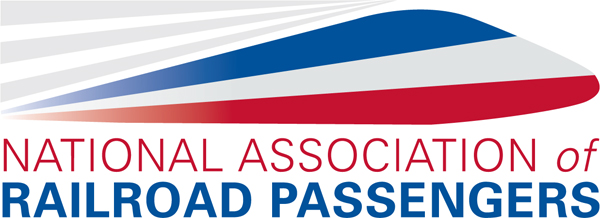Hotline #666
April 26, 1991
Yesterday was a banner day for passenger-rail advocates because the chairman of the Senate Environment and Public Works transportation subcommittee, Sen. Daniel Patrick Moynihan (D.-N.Y.), released a Senate version of the surface transportation bill with much stronger flexibility provisions than were in the Administration's bill. The importance of that feature of this bill cannot be understated. Moynihan's bill would allow money from the Highway Trust Fund to be shifted to Amtrak and maglev as well as transit, and, in theory, just over half of highway funds could be transferred to rail as opposed to only about one-third of highway funds in the Administration's bill.
The key words on flexibility are that "capital and operating costs for mass transit, rail, and magnetic levitation systems, including expenditures on rights-of-way and associated facilities" are covered. Also provided for are carpool and bicycle programs. Listeners beware! -- This good language will not survive even a full committee mark-up without lots of outside support, so tell your legislators you strongly support section 106(a) of the Moynihan bill, especially its inclusion of mass transit and rail.
Bombardier and Amtrak, at long last on April 22, announced an order for 140 Superliners. For $350 million -- or about $2.5 million apiece -- Amtrak will get six deluxe sleepers for the Auto Train, 49 standard sleepers, 38 coaches, 20 diners, 15 lounges, and 12 transition dorms, plus an option to purchase 39 more cars at the same unit price. The new cars will all have full-retention toilets, as required by law. They will be delivered between July 1993 and January 1996 for the Auto Train, Capitol Limited, and City of New Orleans, and for increasing capacity on western trains.
The Cardinal will be made daily by using cars displaced from eastern Superliner trains. Other expansion items, such as a daily Sunset Limited or an Oklahoma service, will have to wait for cars from the contract option. Amtrak does plan to order single-level Viewliners in 1992.
After the rail strike, we said last week that there was a 65-day period after which the Presidential Emergency Board recommendations would be imposed on the rail freight industry. Actually, that period begins only once a new panel is selected, which hasn't happened yet, not from last week when the law ending the strike was signed.
The last day of service for Amtrak's Calumet commuter train between Chicago and Valparaiso, Ind., is May 3. Because many riders use monthly passes and because there will be only three days of service in May, Amtrak will allow free travel May 1-3 for April pass holders. After that, because no agency has come forward to rescue the line, it would be no surprise if Conrail tried to abandon part of the former Pennsylvania Railroad mainline between Gary and Valparaiso.
The Senate passed a resolution on the evening of April 23, sponsored by Senator Exon (D.-Neb.), honoring Amtrak on the occasion of its 20th anniversary on May 1. Representative Swift (D.-Wash.) has sponsored a similar bill in the House. Although half of America's passenger trains disappeared 20 years ago on April 30, intercity passenger service would be extinct today if not for Amtrak. It has been a very rocky road and our work is not yet over. But NARP members can take satisfaction in the efforts NARP made to get Amtrak set up in 1971, all the work NARP did in the intervening years to keep Amtrak going and to improve it, and all the work NARP will go on doing as NARP approaches its 25th anniversary in 1992.
NARP Executive Director Ross Capon will be interviewed on Amtrak's 20th anniversary on the CBS Television network news on April 28, both early and late evening broadcasts.
At the April 24 Amtrak board meeting, Charles Luna, former president of the United Transportation Union, was honored for 20 years of service on the board. He is the only person to have served on the board all the way through. In 1971, he helped design Amtrak's route structure and logo and has been the leader of Amtrak's employee safety program. Graham Claytor said Charlie Luna "has made the greatest contribution to Amtrak of any living person."
NARP will testify before the House Transportation Appropriations Subcommittee on April 30.
The Senate last night approved a budget bill with domestic discretionary spending levels slightly lower than the House's budget bill from two weeks ago. Unlike the House bill that gave increases to Amtrak and other transportation programs, the Senate bill does not go into that level of detail.
Light-rail service to the new Tamien station in south San Jose began yesterday, 99 days ahead of schedule. The new terminal is adjacent to the Southern Pacific coast line and will also have Caltrain service early next year. The Santa Clara County Transportation Agency now operates over 20 miles of light-rail lines around San Jose.
The Massachusetts Bay Transportation Authority has been told by Governor Weld to raise fares as a way to help make up for a state budget deficit. Massachusetts NARP members should tell Weld and the MBTA that raising fares will only encourage driving. Tell them to cut costs on the Central Artery project instead. Hearings on the fare increases will be held in May.
MARC schedules change on May 1, the day the new extension between Baltimore and Perryville begins service.
And now, we have our first maglev NIMBY's -- last month, 200 residents of Westminster, Cal., packed a hearing to protest a proposed maglev from Palmdale to Los Angeles International Airport. Supporters of the project said the maglev would whisk people through Westchester at 100 mph, exactly 11 mph slower than the North Shore Electroliners in 1941. Other technologies are being studied, too.
